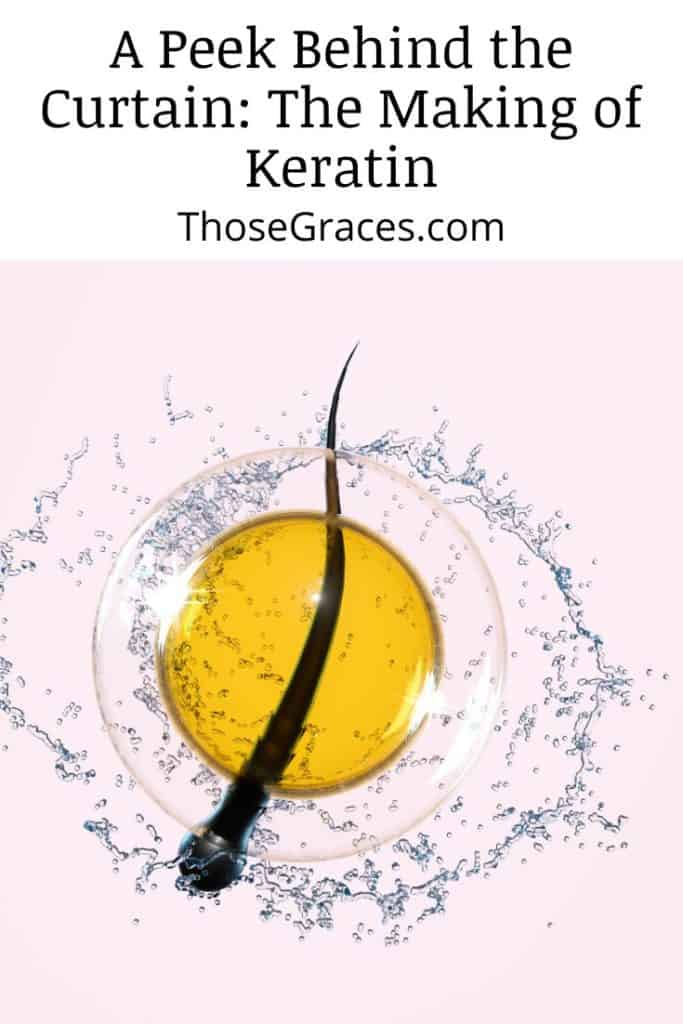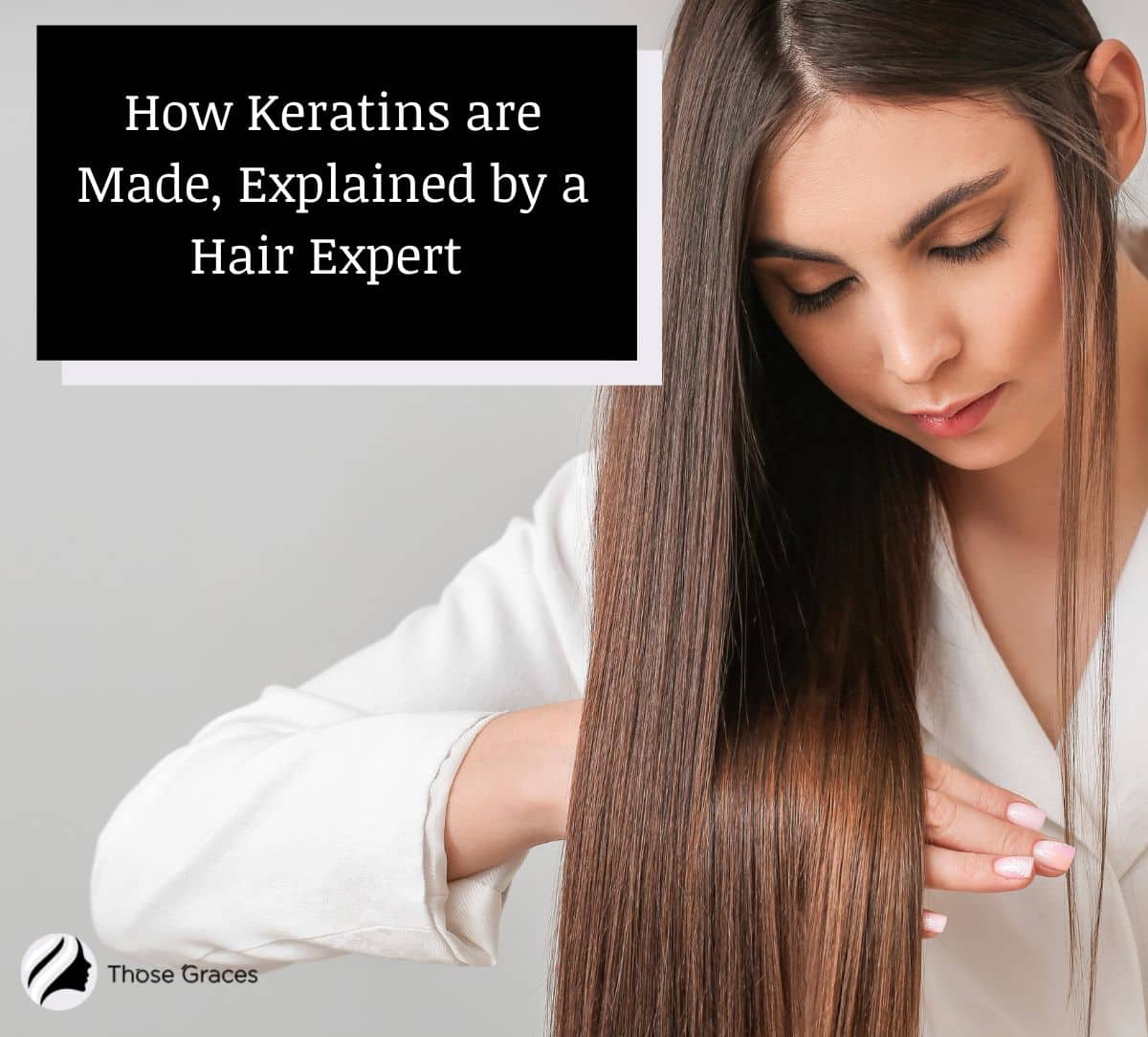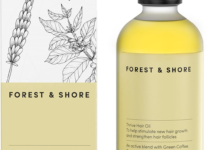Lights, camera, hair…action! Who doesn’t love a bit of keratin know-how to spruce up the conversation?
As a hair enthusiast, I’ve spent countless hours exploring the fascinating world of hair care, and let me tell you, it’s hair-raisingly awesome!
Today, I’m going to unravel the mystery of keratin and its incredible role in making our tresses look fabulous.
So, grab a comb and let’s detangle the secrets of keratin together!
Table of Contents
A Peek Behind the Curtain: The Making of Keratin
Every superhero has an origin story, and keratin is no different. This super-protein is an intermediate filament protein, brought to life by combining various amino acids.
Amino acids are like the building blocks of protein, and keratin is no exception. You’ll find this superstar in every epithelial tissue across your body, including your skin, nails, and, of course, hair.
In the bustling city of our bodies, keratin can be found in different locations, like extracellular, intercellular, and intracellular substances, depending on the tissue type.
It’s a bit like a cosmopolitan protein, living everywhere from downtown (the skin) to uptown (the hair).
Unlike collagen, keratin doesn’t hang out in connective tissues. Instead, it’s the protective shield for our outer layer of epithelial tissue.
This is thanks to its incredible chemical properties, derived from the unique blend of amino acids.
The formation of keratin is a bit like a fine-tuned orchestra. The amino acids, under the careful guidance of keratin genes, create a unique symphony that forms keratin.
These genes are like the conductors, ensuring every note (or amino acid) is in perfect harmony.
In your skin, epidermal cells play a crucial role. They modify to form hair and nails through a process known as keratinization.
It’s a bit like a magical transformation, where these cells undergo continuous cell death while producing and storing keratin. Want to dive deeper?
Check out this video that dives into the making of keratin:
@piecesofpiawai Keratins are the building blocks of our hair known as proteins. Get to know more about them and how they work. #piecesofpiawai #keratins #keratinfacts #naturalhaircare #fyp #naturalhaircareproductsthatwork #haircareroutine #naturalhairremedies ♬ lofi and minimalist BGM(325514) – Kazuhi
As the level of keratin increases, these epidermal cells harden, providing the necessary mechanical properties to protect your skin.
It’s a bit like developing a natural armor to keep your body safe. However, to keep producing more keratin, we need to assemble the right amino acids to create the perfect chain.
This is where the keratin genes come into play. These genes need to be activated so that keratin gene expression can occur. This process only happens in specific cell types in epithelial tissue, known as keratinocytes [1].
These hardworking keratinocytes are always on the clock, producing keratin to maintain the skin and hair cycle.
They replace dead cells through keratinization, which forms the hair shaft in human hair and the cornified layer in the stratified epidermis. It’s like nature’s recycling process!
For a closer look at the lifecycle of keratinocytes, watch this engaging video:
Meet the Keratin Family [Types of Keratins]
Welcome to the Keratin family reunion! We’ve got two main types of Keratins: Type 1 (the acidic ones) and Type 2 (the basic ones).
But here’s the shocker—there are 54 functional keratin genes [2]! No need to memorize them all, though.
Most of us just need to know the basics, while the rest is more for those biomedical and tissue engineering buffs.
Type 1 Keratins are relatively more acidic, while Type 2 keratins are more basic. Despite their differences, their amino acid structures are very similar.
Both types of keratin have a critical function deriving from their
physicochemical properties. The difference between them is like the difference between vanilla and chocolate ice cream. They both are delicious, and both are ice creams, but they have unique flavors.
Did you know that out of the 54 keratin types, 28 are type 1 keratins, and 26 are type 2?
Of the 28 acidic keratins, 11 are hair-specific, and the rest are found in other epithelial tissues. Similarly, of the 26 basic keratins, six are hair keratin, while the rest reside in other epithelial tissues.
Also, our keratin types can be classified as soft and hard, depending on their location [3].
Soft keratins are found in places like our epidermis, hair shaft, mouth’s inner lining, and the outer layer of other epithelial tissues.
Hard keratin, on the other hand, takes up residence in places like nails and hairs. In animals, you can even find it in horns, feathers, claws, and hooves!
Deciding between “Express Keratin vs Full Keratin“? Take a peek at our comparison guide! And don’t let those keratin concerns keep you up at night – pop over to “Does Keratin Cause Cancer?” for all the need-to-know info.
The Building Blocks of Keratin
Dive into the structure of keratin, and you’ll find it’s made up of amino acids arranged to form a polymeric structure. It’s like a beautiful, intricate necklace, with each bead representing a different amino acid.
Keratin’s primary structure is the linear sequence of these amino acids. Imagine a line of people holding hands; that’s what the amino acids in keratin look like.
The line-up includes stars like alanine, leucine, arginine, cysteine, proline, glutamic acid, aspartic acid, and threonine [4].
Each of these amino acids contributes to the physical properties of the protein. For a closer look at the structure of keratin, you can check out this video:
The secondary structure of keratin is where things get a little more exciting. The linear arrangement of amino acids forms a chain, which then bends into helices and pleats.
It’s like the amino acids go from standing in a line to forming a complex dance routine. This structure is crucial for the protein’s unique properties.
FAQs
Is Keratin soluble in water?
What is the difference between extenso and keratin?
Conclusion
Phew! That was a whirlwind tour of the world of keratin!
It might have been a bit like trying to untangle your hair on a humid day, but I hope you now understand how keratin is made and what its structure is like.
Plus, now you can impress your friends with your hair-raising knowledge of keratin treatments and their benefits.
So, what’s next? The choice is yours! But remember, when it comes to hair health, knowledge is power. So keep exploring, keep learning, and keep loving your hair!
Note: The information in this article is for educational purposes only and is not meant to replace professional advice. Always consult with a healthcare provider or a professional stylist for personalized advice.

Resources
- 1. Keratinocyte – an overview | ScienceDirect Topics. www.sciencedirect.com. https://www.sciencedirect.com/topics/agricultural-and-biological-sciences/keratinocyte
- 2. Moll R, Divo M, Langbein L. The human keratins: biology and pathology. Histochemistry and Cell Biology. 2008;129(6):705-733. doi:10.1007/s00418-008-0435-6
- 3. Type I Keratin – an overview | ScienceDirect Topics. www.sciencedirect.com. Accessed September 5, 2022. https://www.sciencedirect.com/topics/biochemistry-genetics-and-molecular-biology/type-i-keratin#:~:text=Type%20I%20(acidic)%20keratins%20are
- 4. Redirect Notice. www.google.com. Accessed September 5, 2022. https://www.google.com/url?sa=t&source=web&rct=j&url=https://www.sciencedirect.com/science/article/pii/S0021925818754367/pdf%3Fmd5%3D0719c7a7bf4c6b73dd93c3b792187336%26pid%3D1-s2.0-S0021925818754367-main.pdf&ved=2ahUKEwiHpLmF-dr5AhWUP-wKHb95CeoQFnoECAYQBQ&usg=AOvVaw2Z_lxyY-htCr6HcrZBId-f



